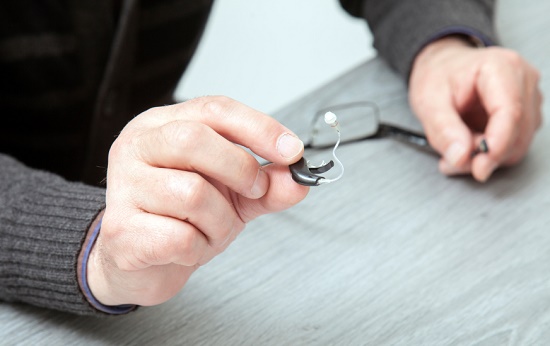
Murphy’s Law tells us that “if anything can go wrong, it will.” A better version might be that “things will go wrong in any given situation, if you give them a chance.”
That’s the reason we change the oil in our cars, replace the filters, and rotate the tires. We’re trying to preserve our investment and extend its life.
You should certainly think of hearing aids in a similar manner. If you give things a chance to go wrong, they will; but if you’re proactive in your maintenance, your hearing aids can endure and perform properly for many years.
So what are some of the things that can go wrong? Below are the three main threats to your hearing aids and what you can do to defend against them.
1. Physical damage
Opponent # 1 is physical damage. Hearing aids consist of delicate electronics that are prone to damage from shock. To defend against this, remember to store your hearing aids in their storage cases whenever you’re not using them.
An effective guideline is that your hearing aids should be either in your ears or in the storage case at all times. Placing your hearing aids exposed on any surface is just inviting Murphy’s Law to come and bump them off. Similarly, when you’re inserting and removing your hearing aids, it’s best to do this over a soft surface in the event that they fall.
In addition, remember to check and replace the batteries frequently. You’re not doing the circuitry any favors by forcing the hearing aids function on low battery power.
2. Moisture
Electronics and water do not mix, which anyone who’s dropped a cell phone in the kitchen sink understands all too well. Once submerged, there’s not much that can be done. But it takes much less than total submersion in water to harm your hearing aids.
Water, in the form of mist, can still work its way into the hearing aids and start wreaking havoc. For that reason, you should refrain from using hairspray, bug spray, or any other sprays while wearing your hearing aids. Also, keep in mind that drastic changes in temperature can generate condensation, for example moving from a climate-controlled room to the outdoors. If this happens, ensure that you dry off any moisture that develops.
We also suggest not storing your hearing aids in the bathroom, as the condensation can create issues. This is another reason that your bedside table drawer is probably the best place to keep your hearing aids when not in use.
3. Earwax and dirt
Even if you’ve safeguarded your hearing aids against physical damage and water with appropriate storage and the prevention of moisture, you’ll still need to protect against opponent # 3: dirt and grime.
Earwax, dust, and debris can accumulate on the hearing aids, clogging the speakers, ports, and other elements. To defend against this, 1) sustain adequate ear hygiene, and 2) clean and sanitize your hearing aids each day.
In regard to cleaning and sanitizing your hearing aids, make sure to use only the tools supplied by your hearing professional. Your hearing professional can provide cleaning kits and guidance specifically for your type of hearing aids.
Finally, consider investing in a hearing aid sanitizer. Sanitizers utilize ultraviolet light to comprehensively kill dangerous pathogens, all while supplying a safe place for storage.
